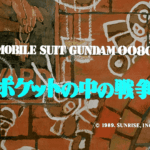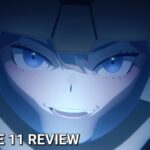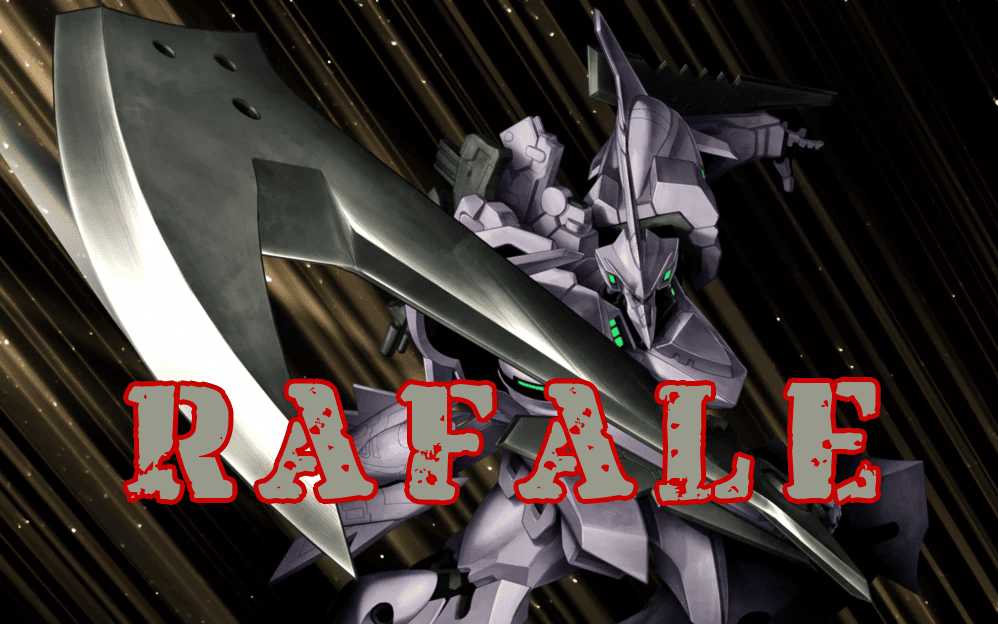
Mecha Profile: Rafale – Muv-Luv Alternative
With the BETA War turning worse and worse for the European continent during the 90s, TSF development is of the utmost important. And the countries on the frontline could not be too reliant on the U.S – which is the world’s leading TSF developer. The EU nations pooled together to develop their own Tactical Surface Fighter for an independent supply chain. However, the French was frustrated with the united program, and opted to start their own development instead. Soon after, the French deployed their own 3rd-generation machine onto the field: the Rafale.
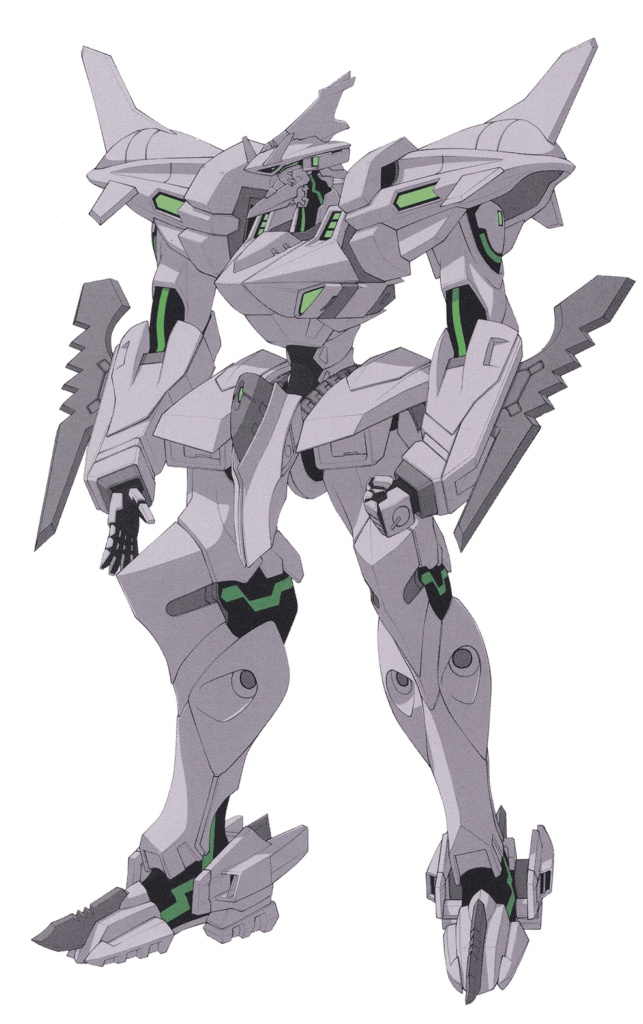
I. Development History:
– In 1985, France officially withdrew from the ECTSF program due to disagreements over the main engine and the specification of the TSF in development, as well as significant delays. France then commissioned Dass-Ault to develop a 3rd-gen TSF that would be the successor to the 2nd-generation Mirage 2000.
– However, the BETA situation suddenly deteriorated drastically and put the world into a difficult situation. The French government decided to prioritized their frontline personnel request to upgrade the Mirage series TSFs instead of developing the new craft. Resources for the upgrade plan was taken from the Rafale development program, which caused the progress to stagnate.
– But there is one silver-lining for France as the delay allowed more time for Dass-Ault to research next generation technologies, which wasn’t present at the start of the program, and 2nd-generation craft from the US. Unlike the US and other EU’s design philosophy of overspecification, the French embraced simplicity for an all-rounder design. Thanks to that, the first prototype craft was rolled out in 1994, only 5 years after the program was officially started.
– The Rafale and the EF-2000 Typhoon were deployed in almost the same year in 1998, and their similar appearance raised some rumors about the two unit’s development. Some say it’s due to both sides getting secret assistance from the Imperial Japan, but the more obvious reason is due to both craft based on the shared results of the ECTSF Program, as well as both having similar purpose.
– As of 2000, over 100 crafts are in operation in the French army, and the majority of them are deployed to the expeditionary forces on the Suez Canal defense line. During the Unlimited timeline, after Operation Babylon, the French & Canadian used the Rafale in their conflict against the US-Japan Coalition army. After the conflict has been resolved, they participated in the attack on the JFK Hive. Notable pilots of the Rafale are Bernadette Le Tigre De La Rivière of the 131st TSF Battalion, a 2nd Lieutenant of the French Army’s 13th Tactical Dragoon Regiment.
– In 1985, France officially withdrew from the ECTSF program due to disagreements over the main engine and the specification of the TSF in development, as well as significant delays. France then commissioned Dass-Ault to develop a 3rd-gen TSF that would be the successor to the 2nd-generation Mirage 2000.
– However, the BETA situation suddenly deteriorated drastically and put the world into a difficult situation. The French government decided to prioritized their frontline personnel request to upgrade the Mirage series TSFs instead of developing the new craft. Resources for the upgrade plan was taken from the Rafale development program, which caused the progress to stagnate.
– But there is one silver-lining for France as the delay allowed more time for Dass-Ault to research next generation technologies, which wasn’t present at the start of the program, and 2nd-generation craft from the US. Unlike the US and other EU’s design philosophy of overspecification, the French embraced simplicity for an all-rounder design. Thanks to that, the first prototype craft was rolled out in 1994, only 5 years after the program was officially started.
– The Rafale and the EF-2000 Typhoon were deployed in almost the same year in 1998, and their similar appearance raised some rumors about the two unit’s development. Some say it’s due to both sides getting secret assistance from the Imperial Japan, but the more obvious reason is due to both craft based on the shared results of the ECTSF Program, as well as both having similar purpose.
– As of 2000, over 100 crafts are in operation in the French army, and the majority of them are deployed to the expeditionary forces on the Suez Canal defense line. During the Unlimited timeline, after Operation Babylon, the French & Canadian used the Rafale in their conflict against the US-Japan Coalition army. After the conflict has been resolved, they participated in the attack on the JFK Hive. Notable pilots of the Rafale are Bernadette Le Tigre De La Rivière of the 131st TSF Battalion, a 2nd Lieutenant of the French Army’s 13th Tactical Dragoon Regiment.
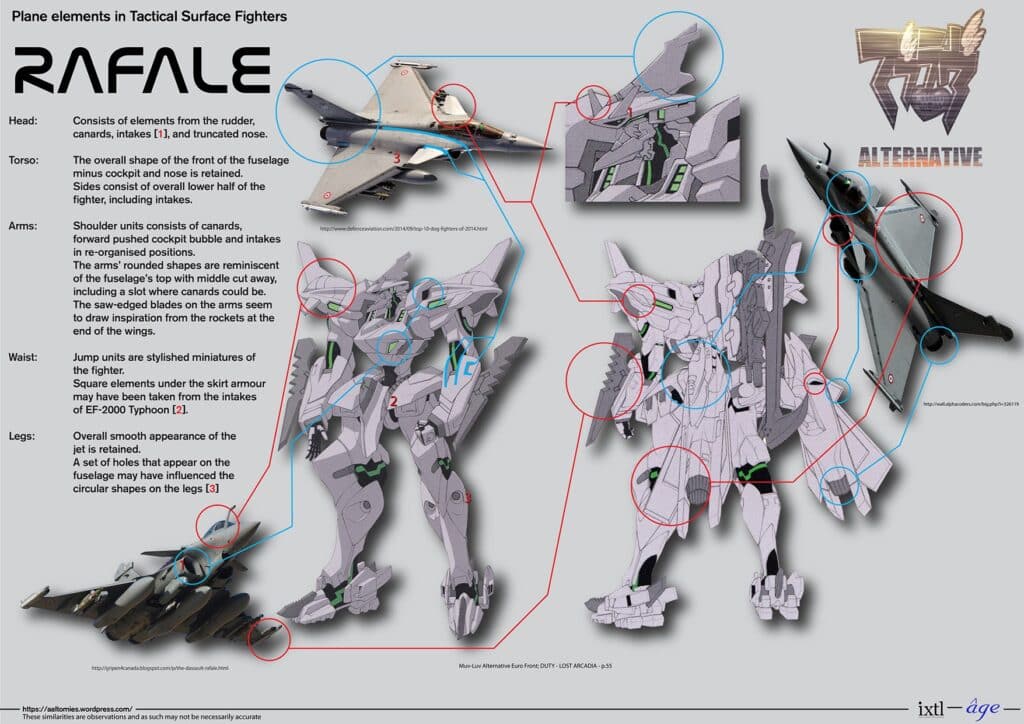
II. Technical Specs & Armaments:
– The official height of the Rafale isn’t confirmed, but based on the EF-2000 Typhoon, the craft should be around 17.5 meter. The unit utilizes 2 S88 Jump Units – which is Dass-Ault’s design and what caused the French to leave the ECTSF Project. The overall proportion and color-scheme of the Rafale is quite similar to the EU’s Typhoon.
– Despite disagreement, the French still keep the same design philosophy with the ECTSF Program: a TSF with high mobility, close-quarter combat oriented fast enough to dodge laser fire and can conduct hive invasion operation. However, unlike other TSF’s over-specced design, where they either focus on bombardment or melee combat, the Rafale embraced simplifications across the craft, but still retain the highest engineering quality in fundamental parts such as the control block, the armor material, carbonic actuators and bullet shells. The simplifications sped up the development time while still allow opportunity to study and incorporate other advance TSF technologies.
– The Rafale use the FWS-G1, developed from the American’s AMWS-21. The gun’s desgin is similar to the FAMAS in real life. Like other Assault Cannons, the FWS-G1 also has an attaché for 120mm shells. It is unknown if the Assault Cannon is capable of equipping an extension barrel for sniping. Furthermore, the French developed their own Mount Pylon called the FN-94 Mount Pylon. It has a different connectors compared to other Pylon, but the limitation still remains: the Assault Cannon and Melee Halberd use different attachments, so they aren’t interchangeable.
– The Rafale also uses a unique Melee Halberd called the Falcate Sword. As the name suggest, the weapon looks like a scythe with a curved tip. It is the 2nd largest of all Melee weapon, and is top-heavy. The shape of the blade is to combat the Grappler-class’ armored forearms. While the Rafale is capable of using Gun Sweeper loadout, we’ve never actually see any Storm Vanguard or Strike Vanguard with 2 Falcate Swords. It might be that the weapon is too heavy to use, or that it is not an efficient loadout.
III. Gallery:
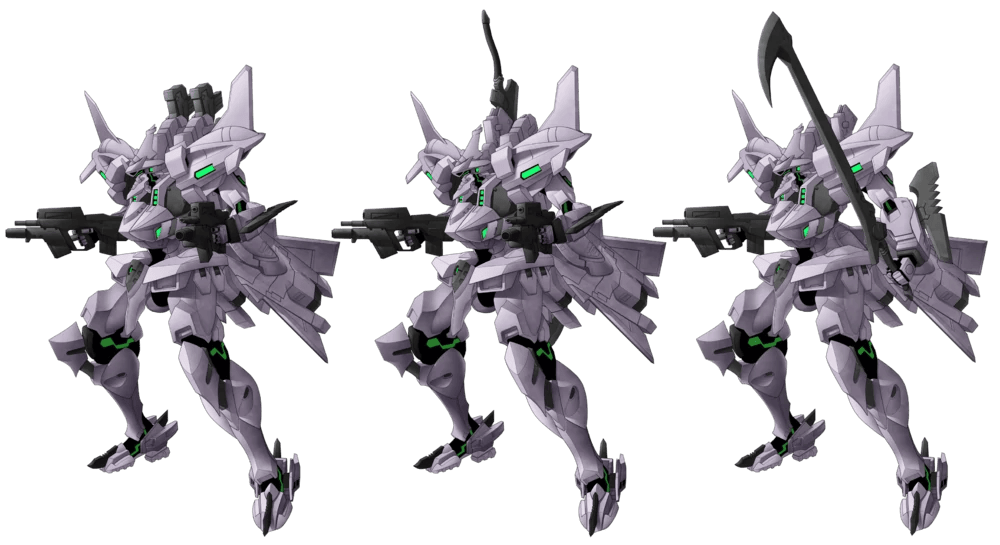
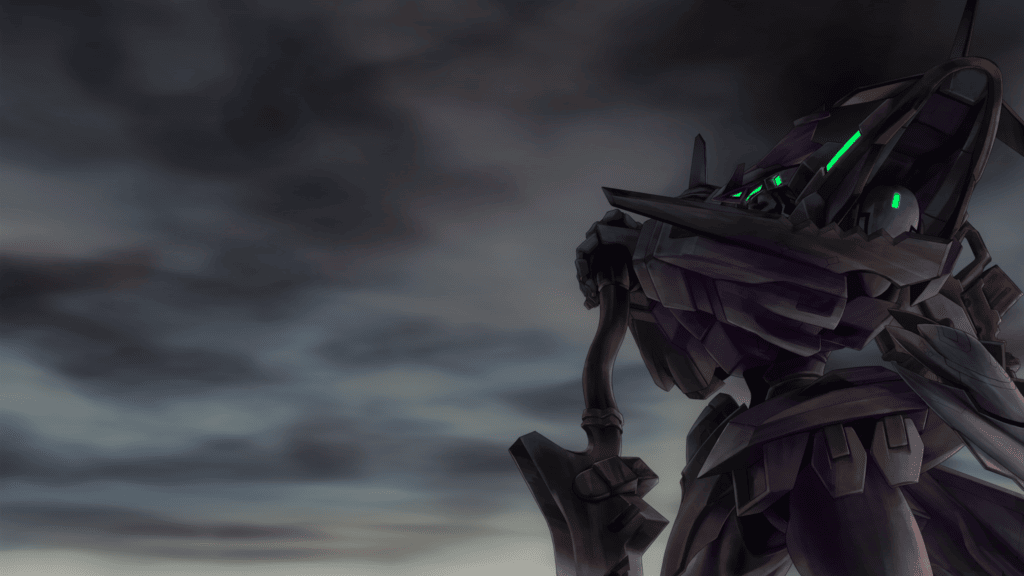
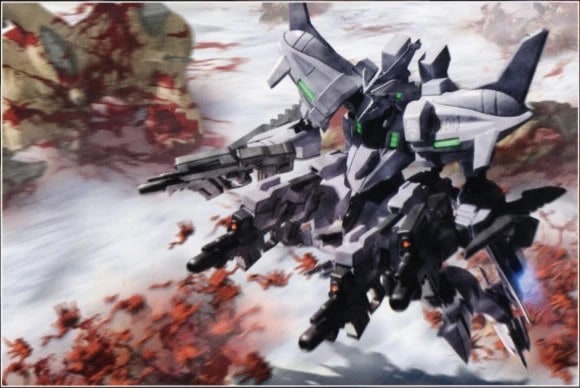
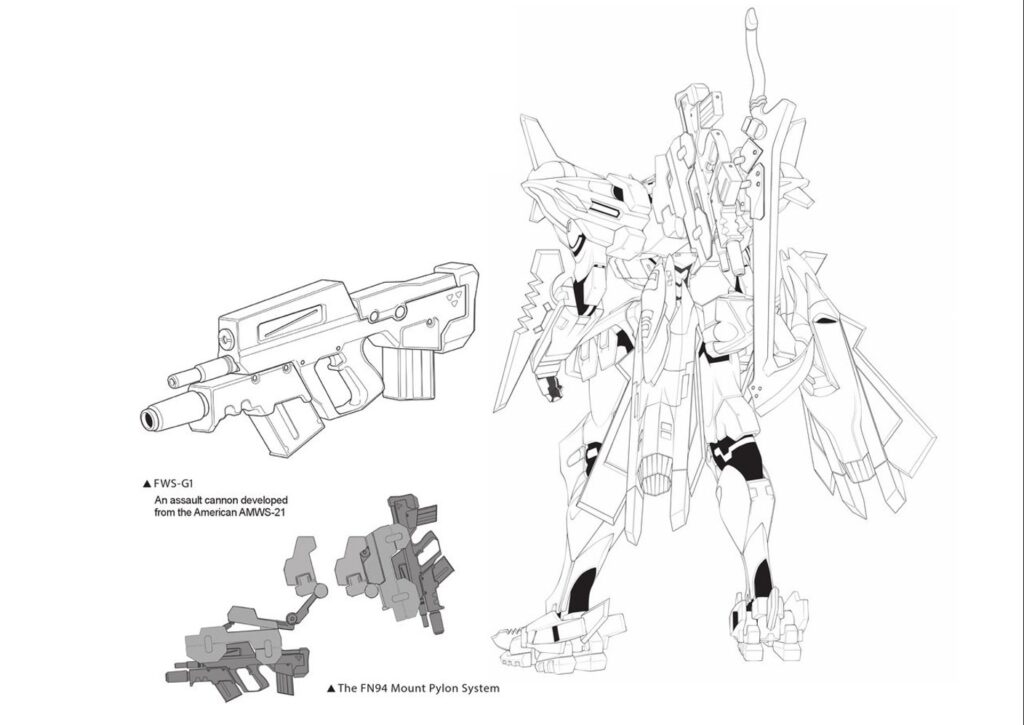
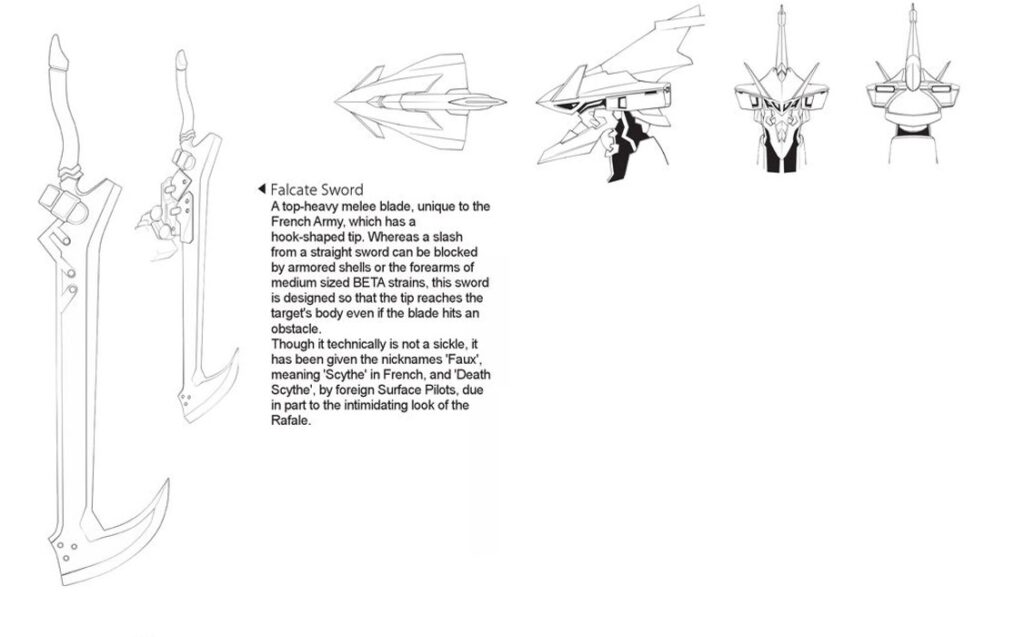
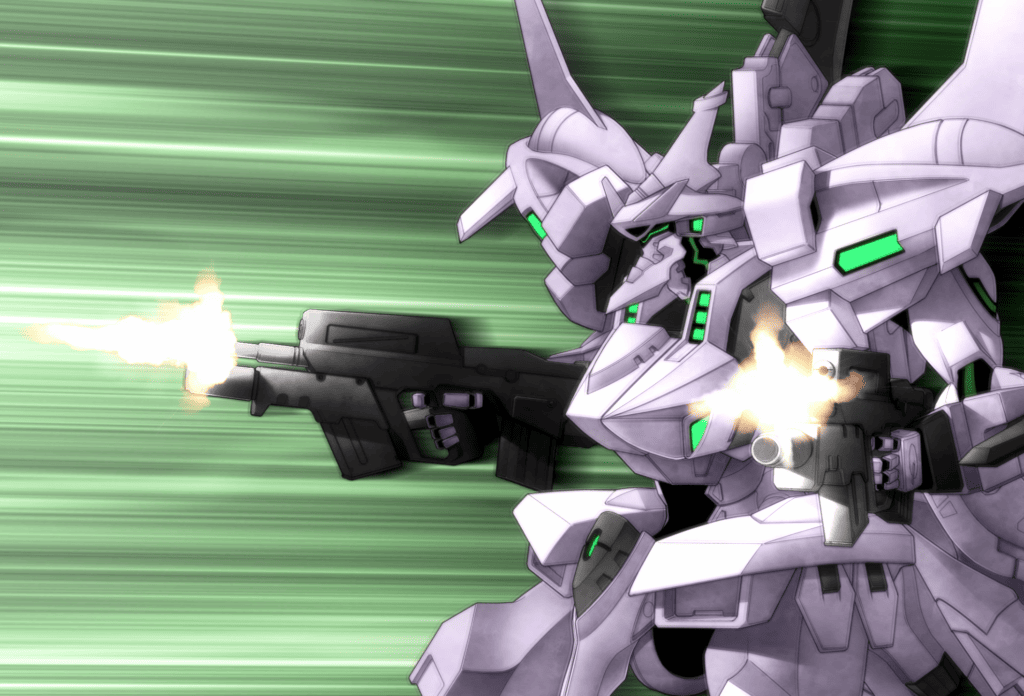
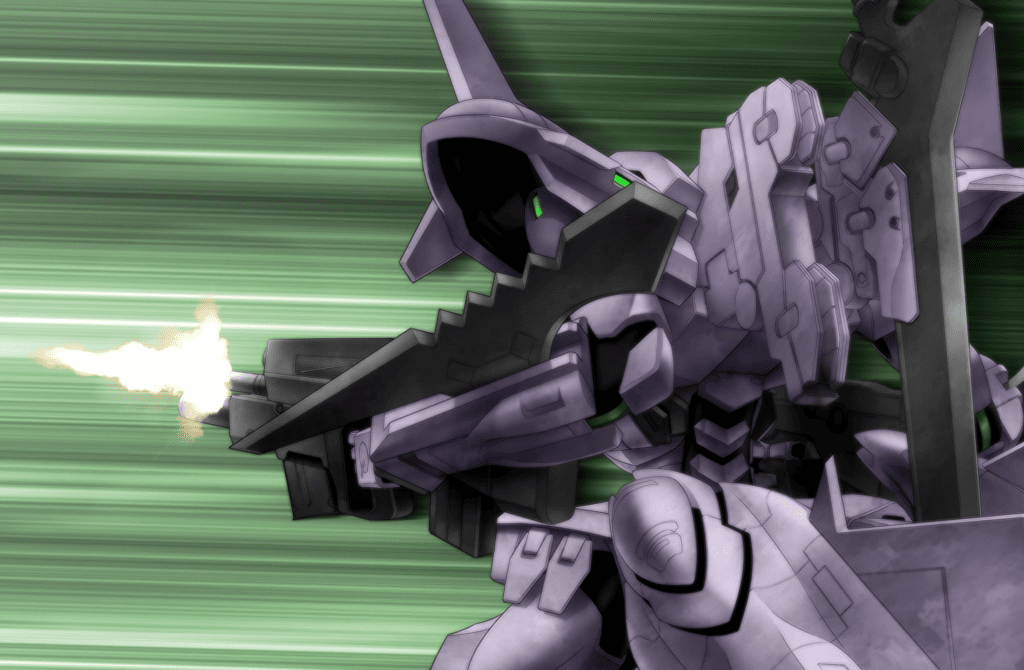
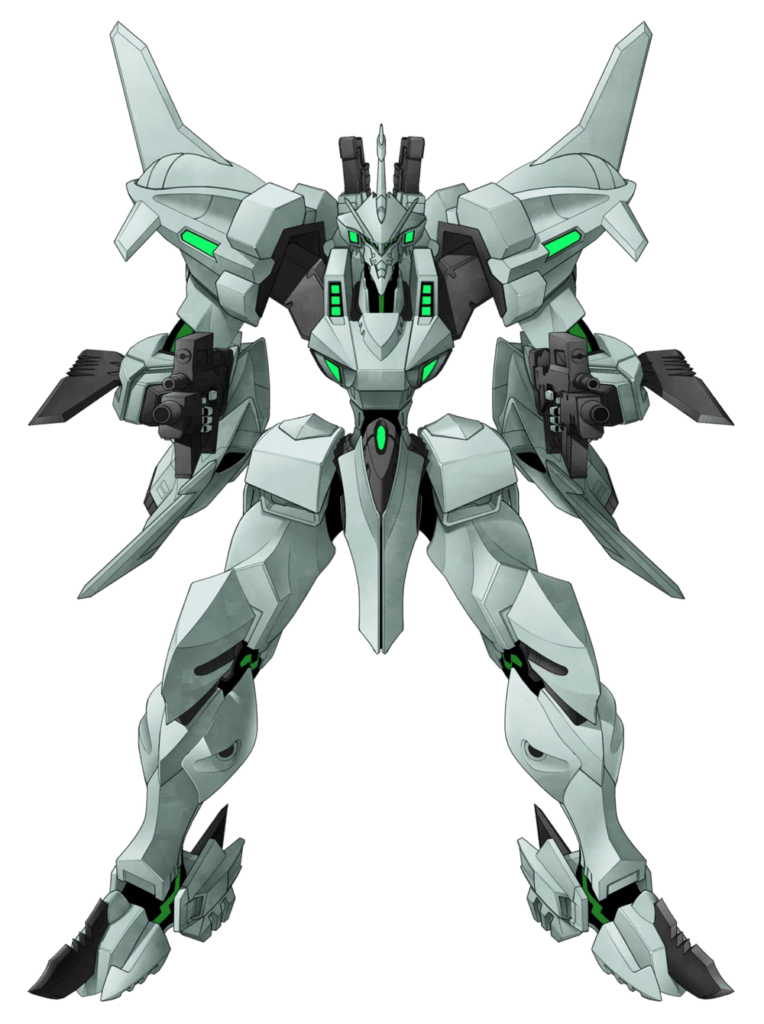
Swipe for more:
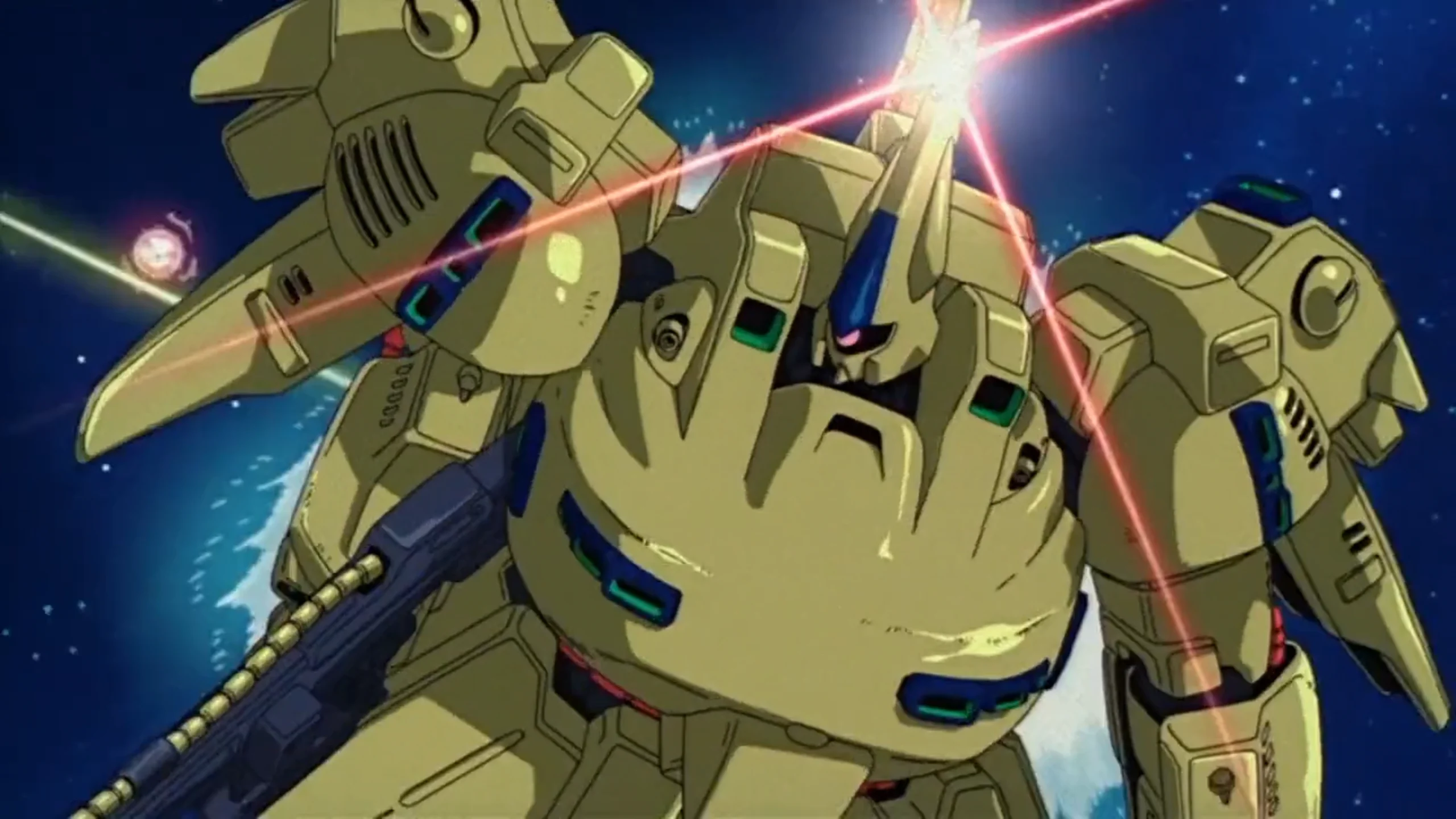
Mecha Profile: MS Gundam Zeta – PMX-003 The O
One of the most chonky bois to ever appear on screen. Piloted by the nefarious Scirocco, The-O is an impressive MS that is more agile than it looks.

Mecha Profile: Gundam Age – Gundam AGE-FX
The ultimate evolution of the Age Gundams. The Age-FX can bring an X-Rounder’s ability to their maximum potential, featuring funnels that can wipe out fleets of enemy.
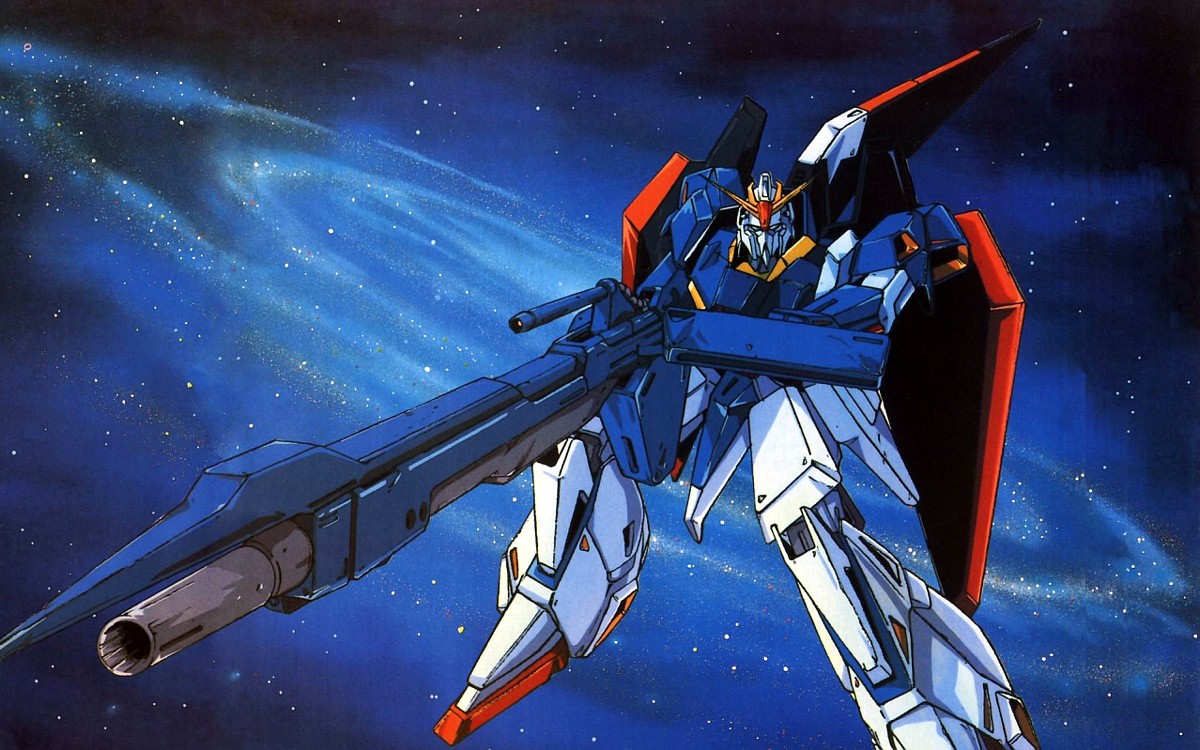
Mecha Profile: MS Gundam Zeta – MSZ-006 Zeta Gundam
The first transformable Gundam in the franchise. The Zeta Gundam is an iconic mobile suit that paved the way for many Gundams that come after.
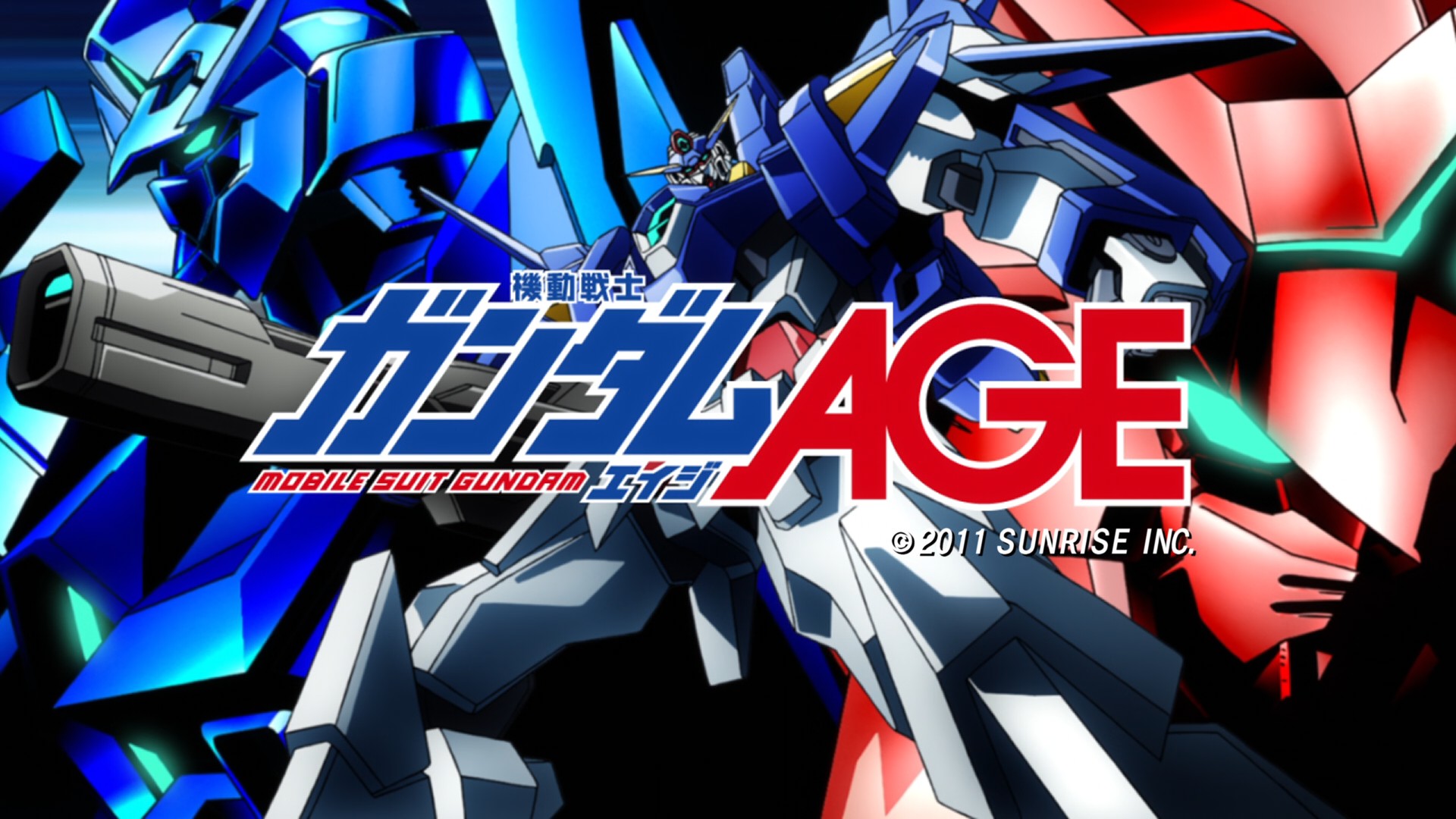
Mecha Profile: Gundam Age – Gundam AGE-3
Another change in generation – the Age-3 Gundam continues to be the Asuno family’s ace in the hole, sporting all new gimmick and superior firepower.

Mecha Profile: Gundam 0079 – RX-78-2 Gundam
The grandfather of all Gundams – the RX078-2 is a super prototype that paved the way for the Federation’s victory. It is both feared and revered by all.
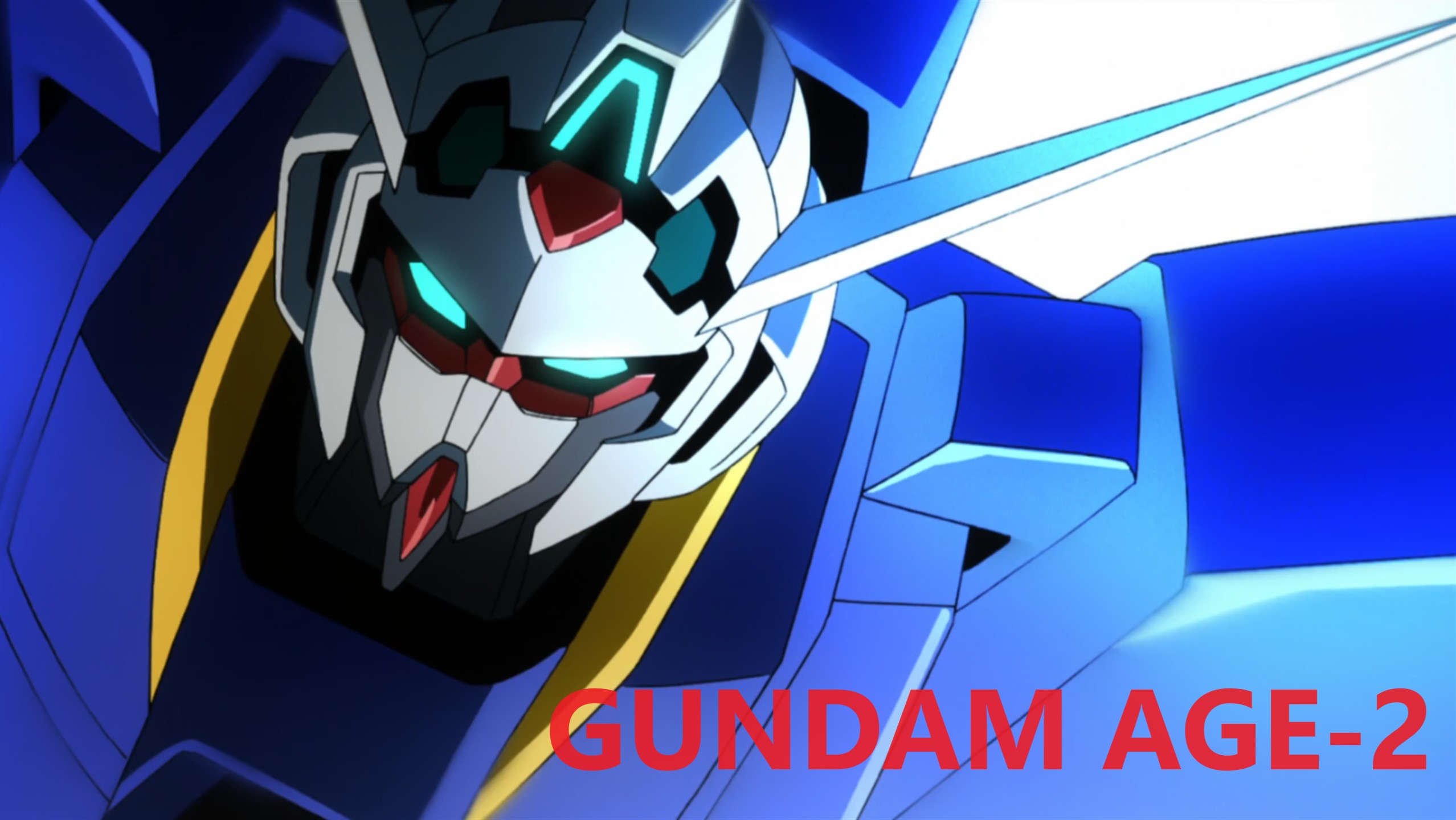
Mecha Profile: Gundam Age – Gundam AGE-2
The 2nd generation Gundam, the Age-2 is a straight upgrade with a heavy focus on high mobility and great firepower. A vital element in the war between the Federation and the Vagan.
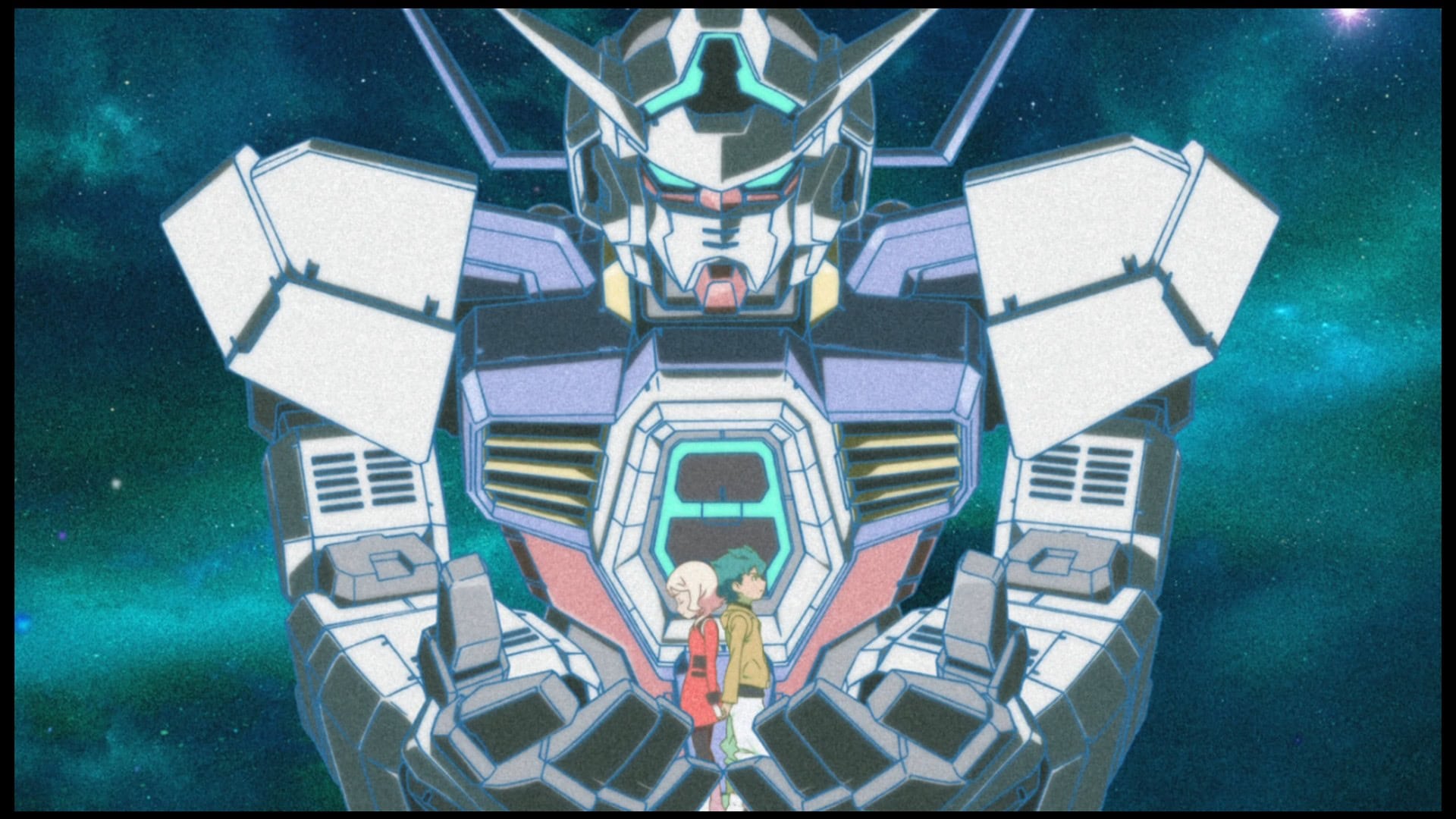
Mecha Profile: Gundam Age – Gundam AGE-1
The first generation Gundam of the Advance Generation, the Age-1 Gundam is Flit Asuno’s most trusted partner and has served him for decades.
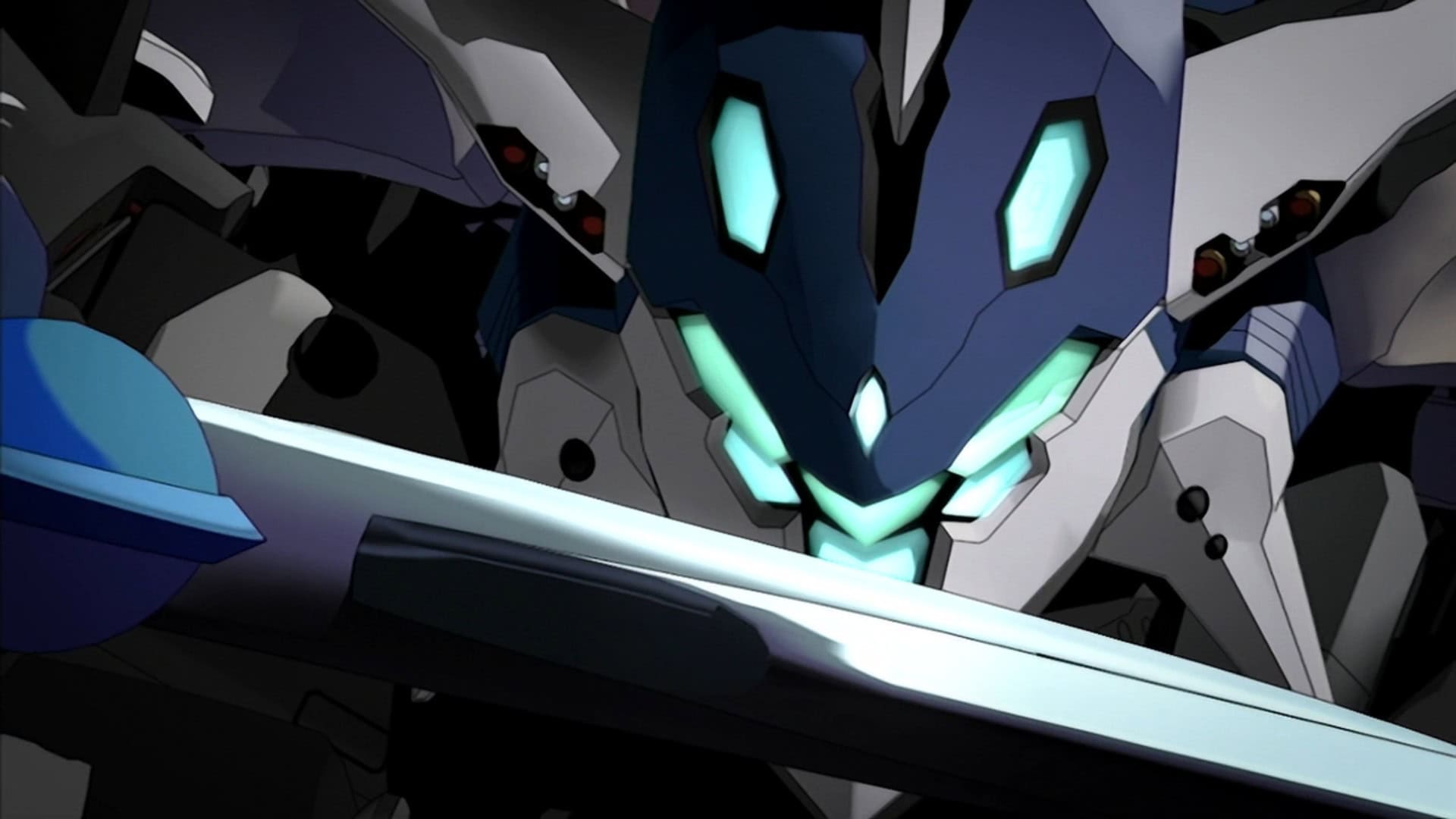
Mecha Profile: Aquarion Mars – Sousei no Aquarion
The swordsman of power – Aquarion Mars is the 3rd form of the triple-changer super robot. It is an elegant and agile knight excel in close combat using its sword.
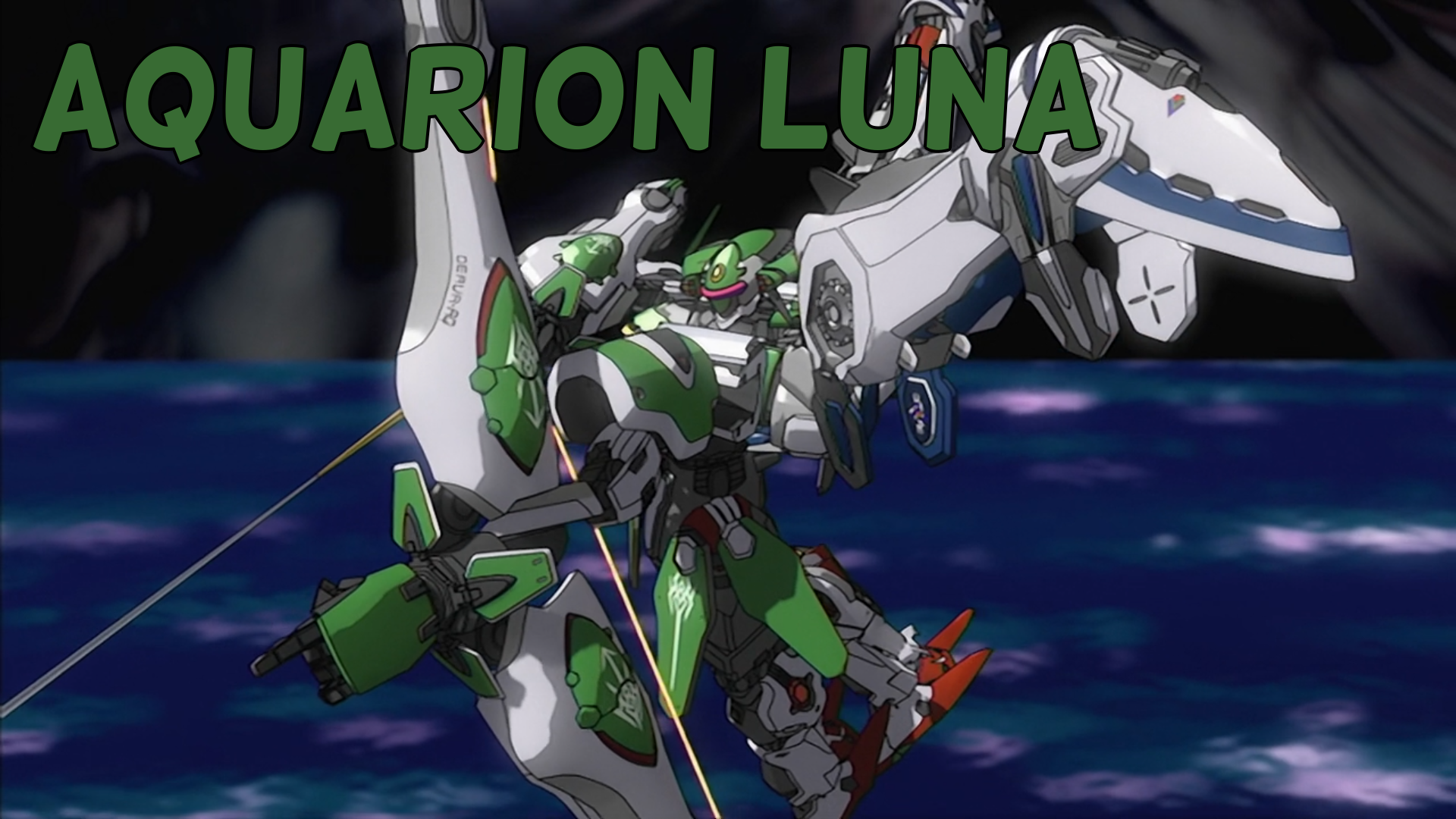
Mecha Profile: Aquarion Luna – Sousei no Aquarion
Armed with the bow and arrow of the Moon, the Luna Aquarion is the 2nd form of the Mechanical Angel, focusing on ranged attack with deadly precision and elegance.
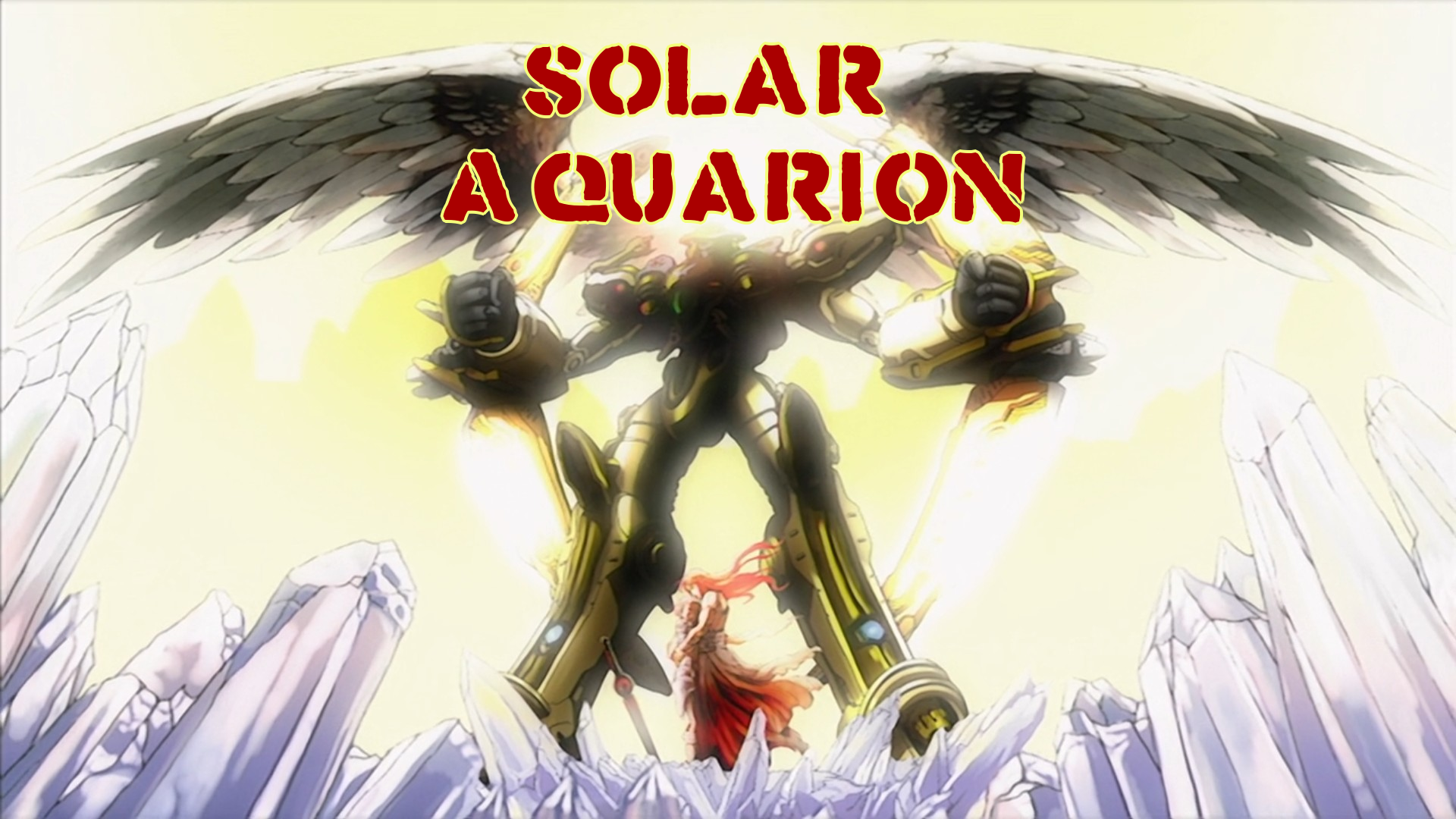
Mecha Profile: Solar Aquarion – Sousei no Aquarion
The shining wings of the Sun – the Solar Aquarion is a mechanical angel that stood on humanity’s side. Its infinite fist can reach the sky and..well…literally anything.
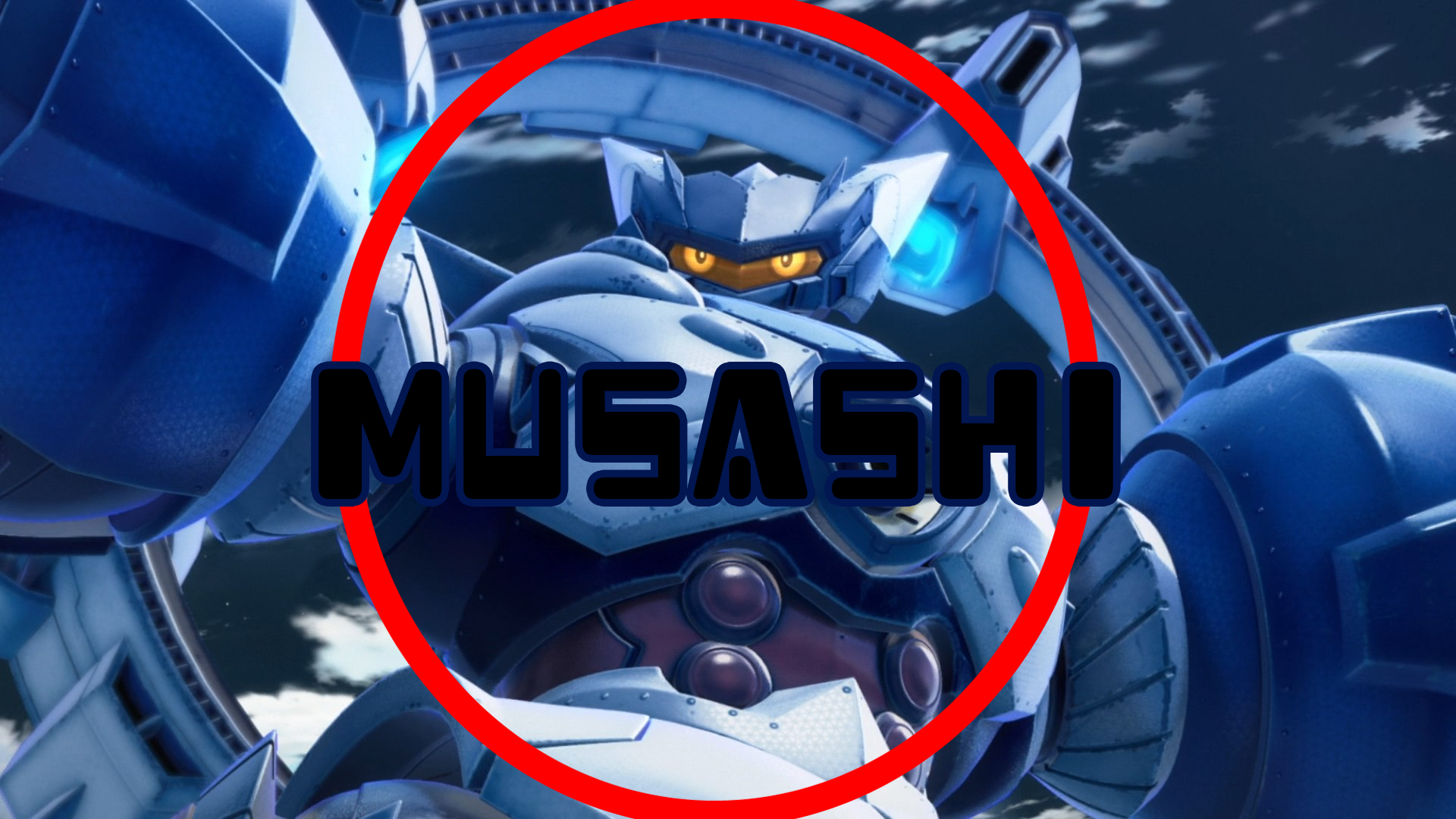
Mecha Profile: Megaton-Class Rogue Musashi-O – Megaton-kyuu Musashi
A twin unit of the Musashi, the Musashi-O is an experienced combat machine that helped Arshem to achieve her goal. A Megaton-class with a Megaton sass.
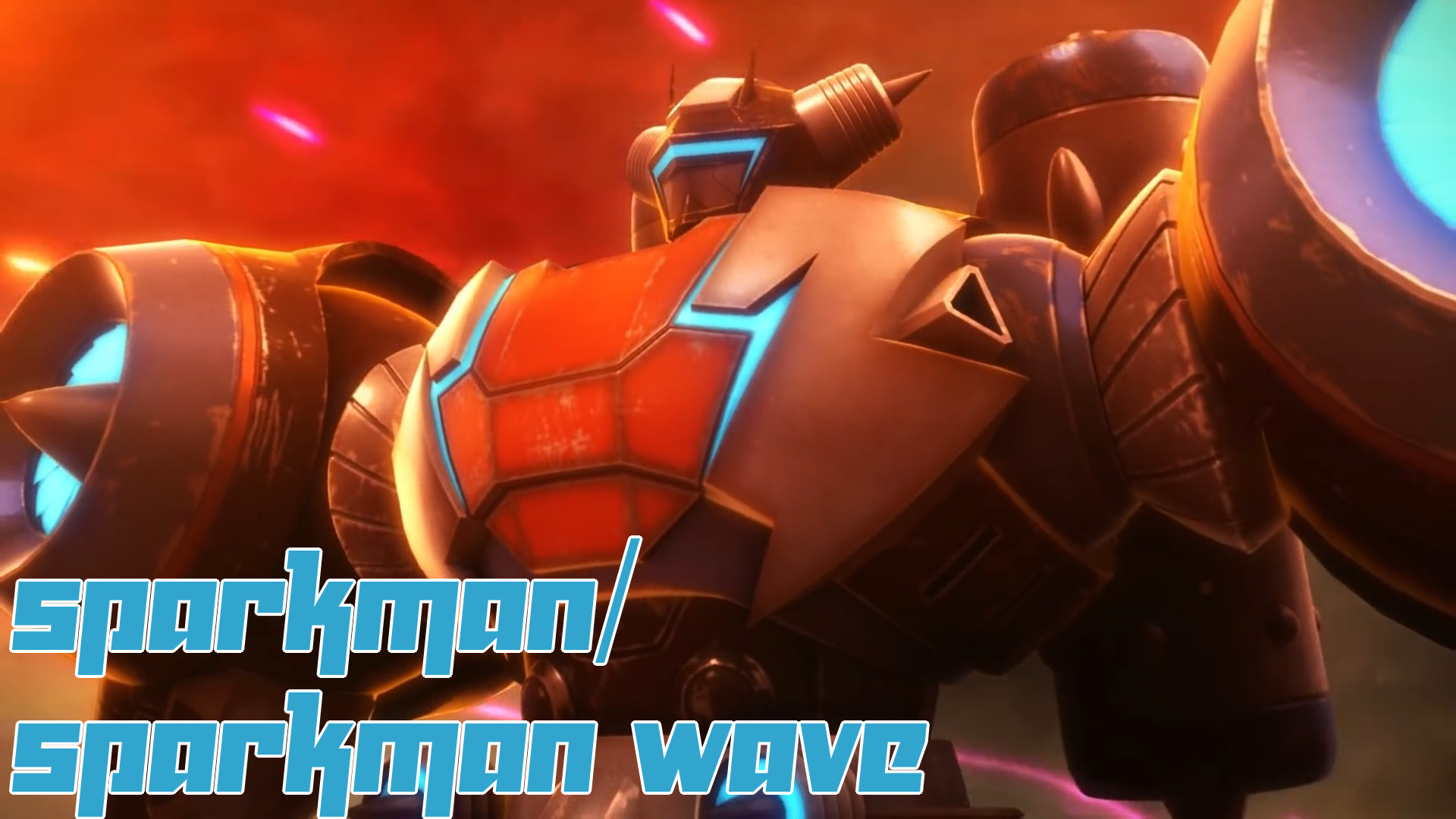
Mecha Profile: Megaton-Class Rogue Sparkman/Sparkman Wave – Megaton-kyuu Musashi
Carrying the weight of both worlds in his arms, Teru set out to protect the world where his loved one lives. He heads to battle in an electrifying Megaton-class: the Sparkman.
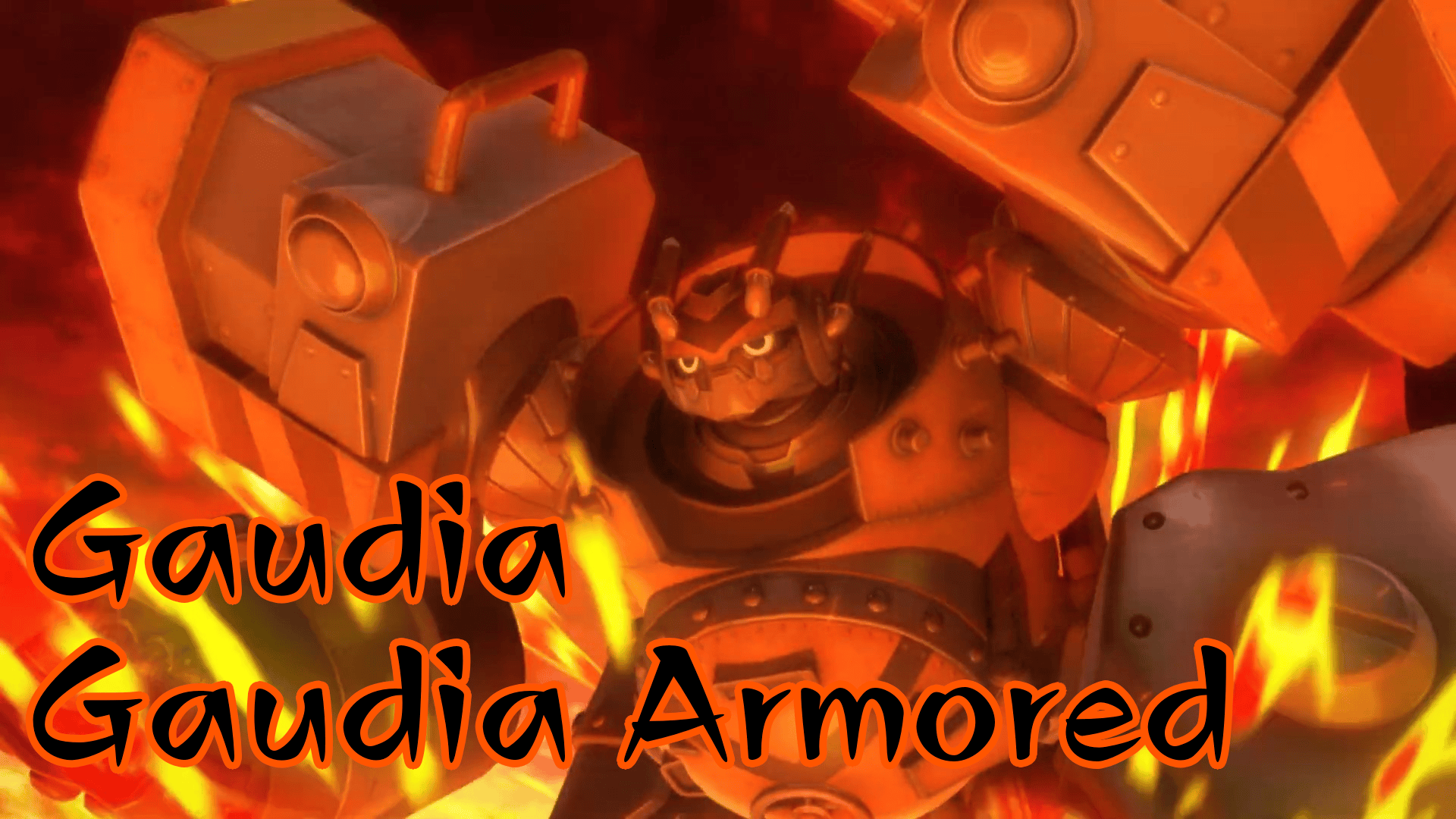
Mecha Profile: Megaton-Class Rogue Gaudia/Gaudia Armored – Megaton-kyuu Musashi
Power overwhelming. The tanky brawler from the hood is here to protect! Ryugo Hijikata – a rough but kind-hearted boy – pilot his Megaton-class into battle – the Gaudia.
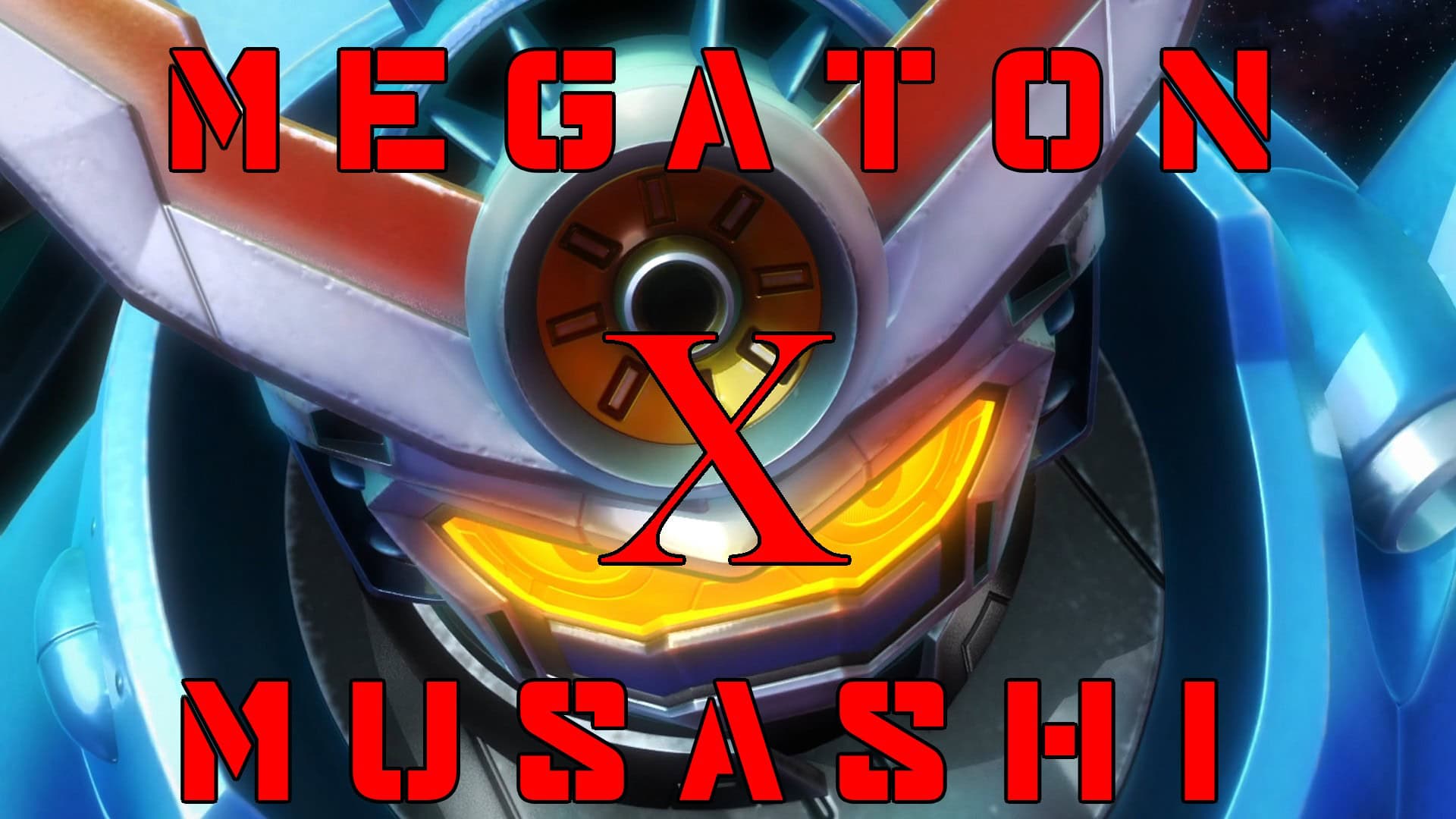
Mecha Profile: Megaton-Class Rogue Musashi X – Megaton-kyuu Musashi
The ultimate Megaton-class – the Musashi X. The final hope of humanity sees the reunion of the original trio – Yamato, Teru and Ryuugo for the final battle.
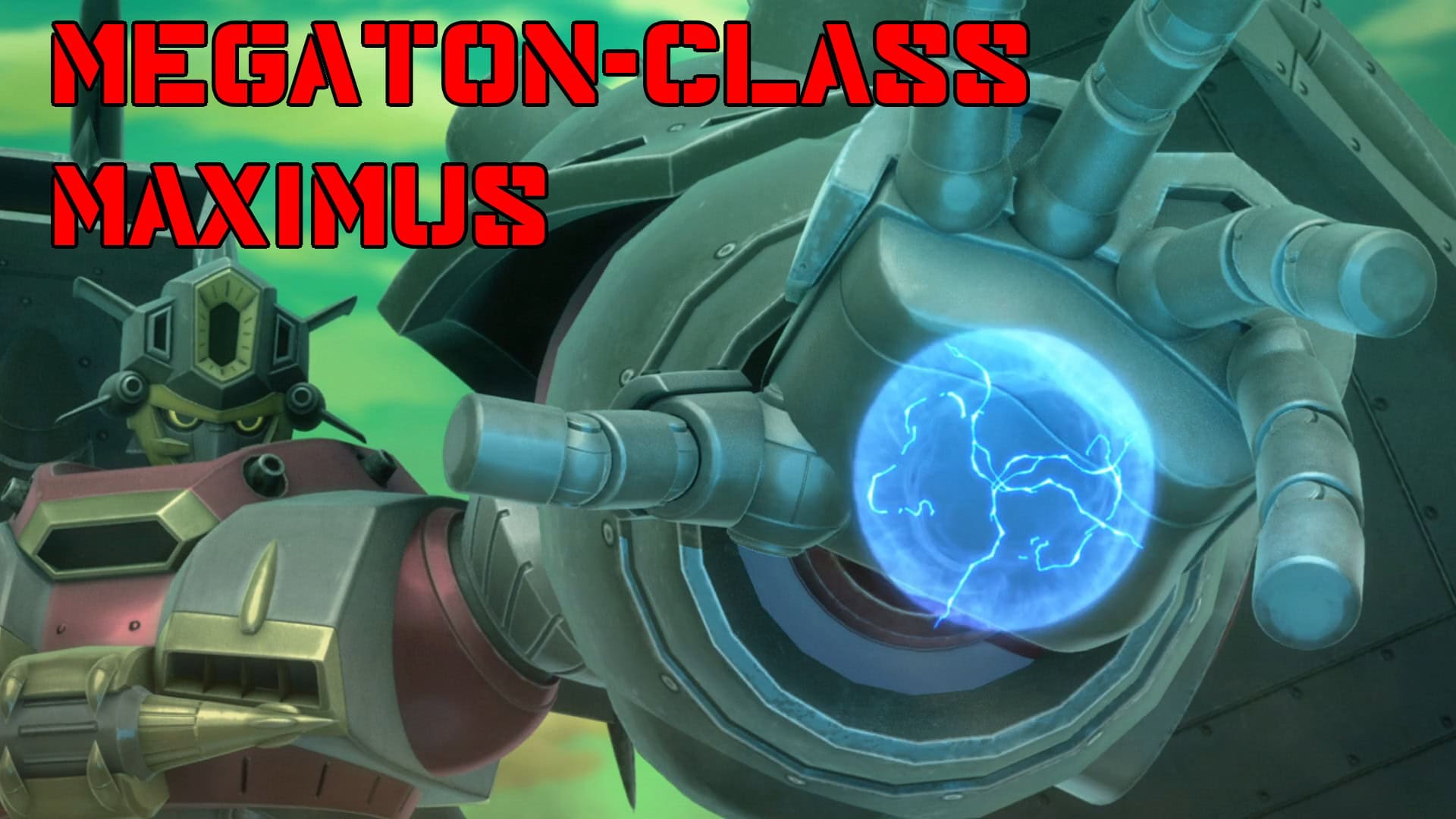
Mecha Profile: Megaton-Class Rogue Maximus – Megaton-kyuu Musashi
After the all-rounder and the galloping Rogue, next is the bulky Gladiator. The Maximus is a one-Rogue-army capable of clearing the battlefield in just one attack.
